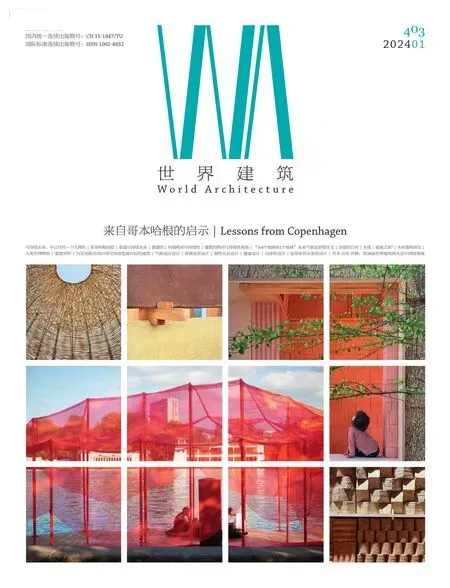木材重构项目
赞·布朗
项目负责人:赞·布朗
项目合作者:J.Jensen,Roberto Crocetti
支持机构:Realdania慈善协会
Project Manager: Xan Browne
Project Associates: J.Jensen,Roberto Crocetti
Funded: Realdania
木材重构探究废弃木材的建筑潜力,旨在挑战我们对被视为废物的材料的看法。将树木转变成建筑的过程中涉及到许多参与者、资源和文化模式,包括森林管理、砍伐、干燥、锯切、打磨和表面处理。随着时间的推移,木材与周围环境(包括居民生活、工匠操作、昆虫栖息和湿度变化)的相互作用会导致其出现裂缝、积灰、钉子嵌入、变形和涂改标记。这些特征往往是二手木材价值低的原因,其中大部分木材都被用于能源回收。
该项目研究了建筑如何将被认为是缺陷的材料特性作为积极因素来进行设计,从而延长木材的使用寿命。该结构被视为一个建筑部分,具有重复的组件、特定的荷载和公共建筑的规模。每个组件都具有相同的外部几何形状,但根据组件设计承载的负荷不同,其密度也有所不同。组件的生产体现了短供应链和将数字仿真与开放的制造技术相结合的设计方法。□(孙斯坦 译)
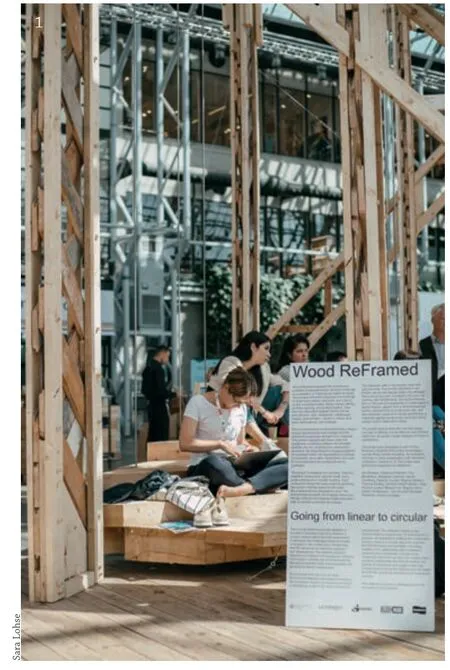
1 木材重构项目 Wood ReFramed Project
Wood ReFramed explores the architectural potential of discarded wood,aiming to challenge our perception of materials that we regard as waste.The process of transforming trees into buildings involves many actors,resources,and cultural norms,including forestry,felling,drying,sawing,profiling,sanding,and surface treating.Over time,the interaction between timber and its environment -with inhabitants,craftspeople,insects,and humidity -results in cracks,dust,nails,deformations,and markings.These traits often the cause for secondary timber's low value,with the majority destined for energy recovery.
The project investigates how architecture can contribute to longer timber service lives by incorporating the material traits we call defects as active design contributors.The structure is conceived of as a building segment,featuring repetitive components,specific loads,and a scale reminiscent of a public building.Each component shares the same external geometry but varies in density based on the loads the components are designed to carry.Component production exemplifies short supply chains and design methods that integrate digital simulation with accessible fabrication techniques.

2 人们与展馆互动 People interacting with the pavilion
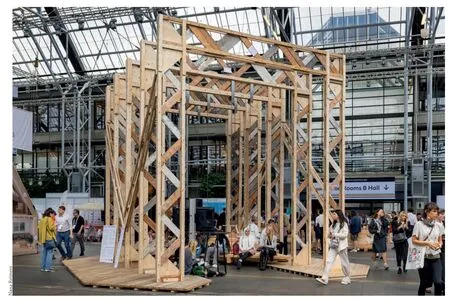
3 人们坐在展馆里享受空间 People sitting and enjoying the pavilion space

4 废木料 Wastewood material

5 亭子横梁的细节 Detail of the pavilion beams
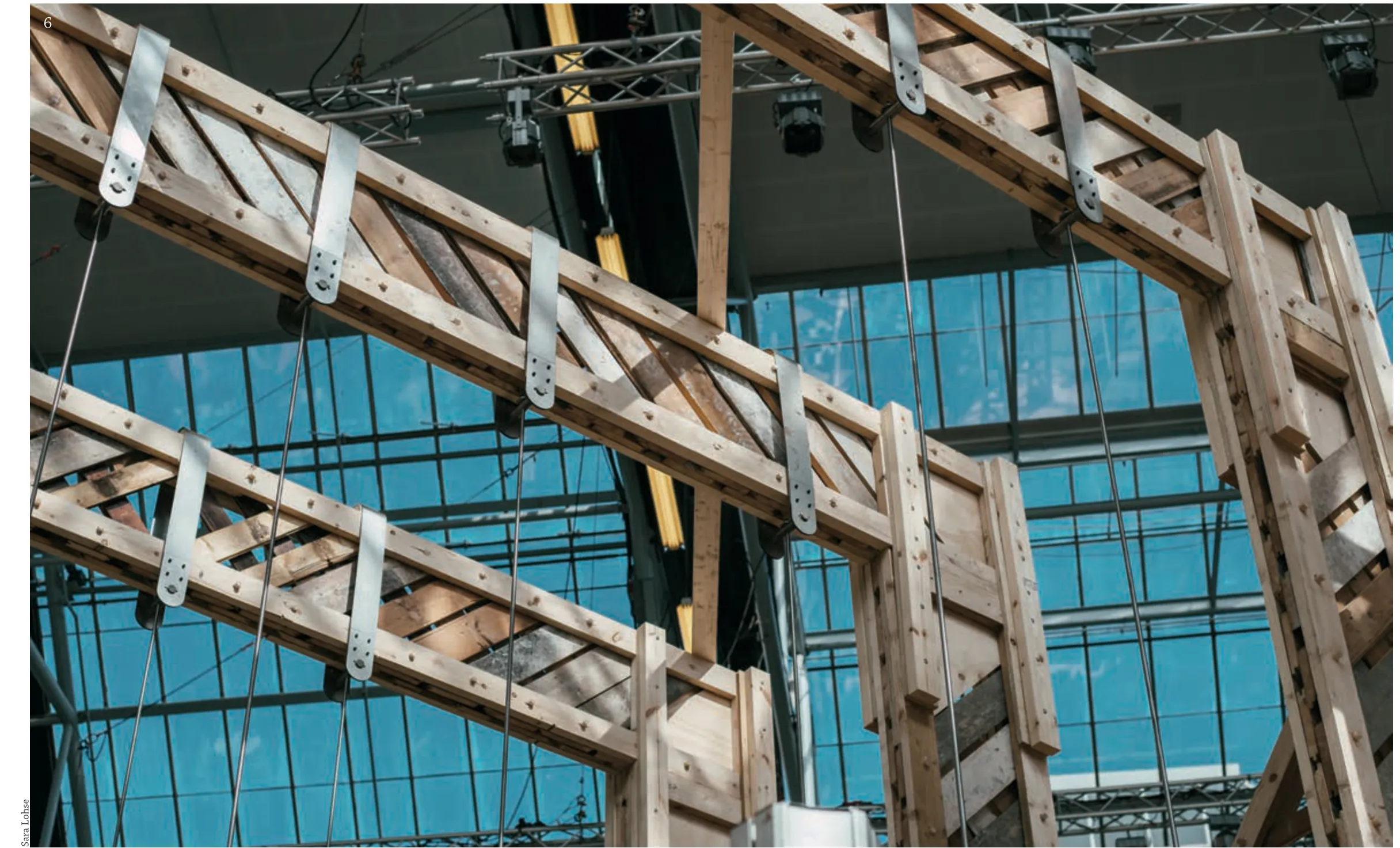
6 梁和柱之间的接缝 Joinery between beams and columns
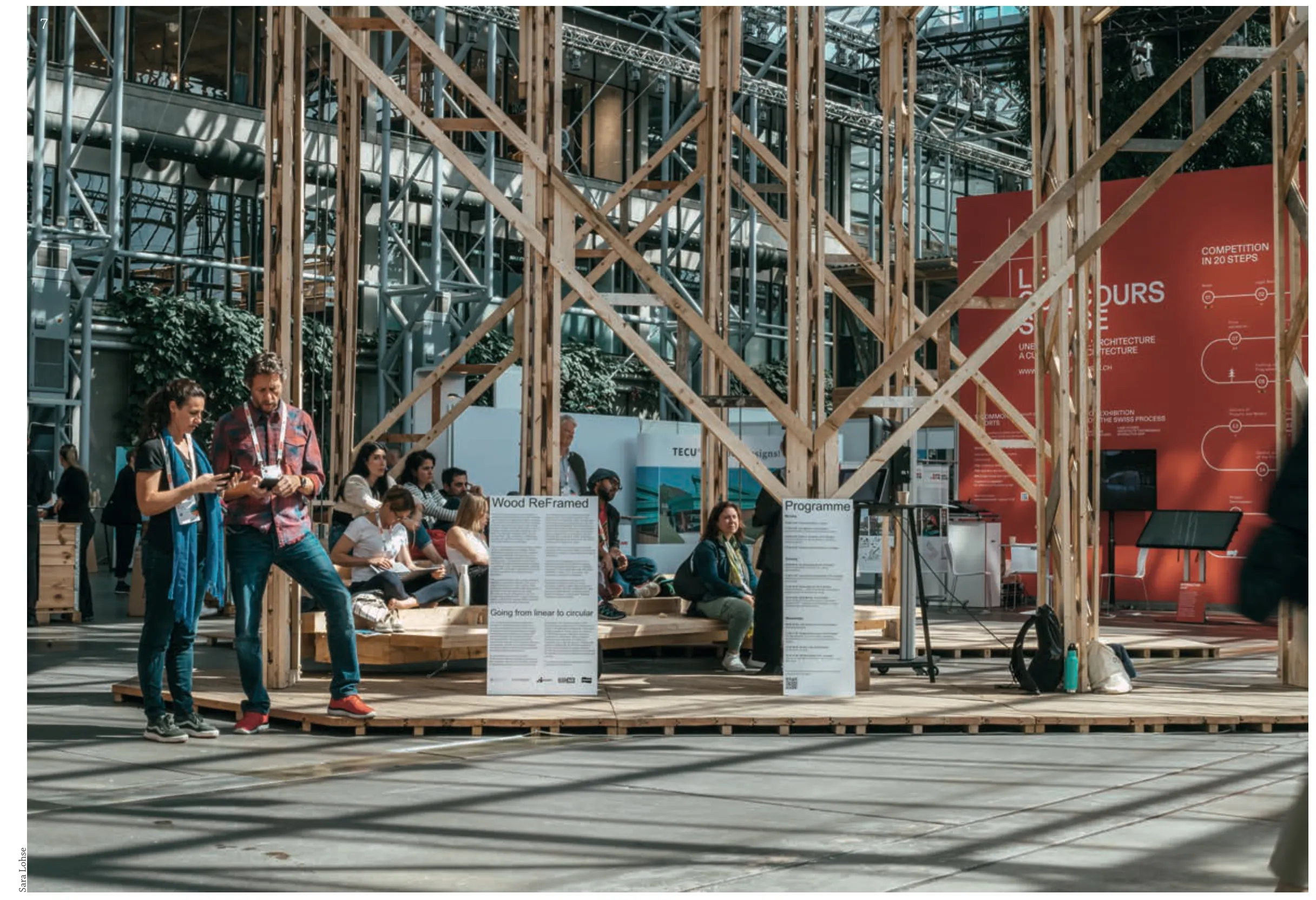
7 展馆休憩区 Pavilion sitting area

